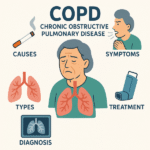Now Reading: Pregnancy: Signs, Symptoms, Stages, Diagnosis & Treatment
- 01
Pregnancy: Signs, Symptoms, Stages, Diagnosis & Treatment
Pregnancy: Signs, Symptoms, Stages, Diagnosis & Treatment
Pregnancy is a remarkable physiological process that marks the beginning of life. It involves the conception, growth, and development of a new individual inside the uterus and is a time of profound change in a woman’s body, both physically and emotionally. Understanding the signs, symptoms, stages, and medical care required during pregnancy is crucial for the health and well-being of both the mother and the baby. This comprehensive guide aims to provide an in-depth overview of pregnancy, covering each phase from conception to delivery, diagnostic methods, treatment and care strategies, and answers to common questions.
Signs and Symptoms of Pregnancy
The earliest signs of pregnancy may appear within the first few weeks after conception. While each woman’s experience may vary, common early pregnancy symptoms include missed periods, breast tenderness, nausea (often called morning sickness), increased urination, fatigue, and mood changes. These symptoms are the result of hormonal changes, primarily increased levels of human chorionic gonadotropin (hCG), progesterone, and estrogen.
Additional symptoms that may appear as pregnancy progresses include:
- Food aversions or cravings
- Constipation
- Bloating
- Dizziness or faintness
- Heightened sense of smell
- Spotting or implantation bleeding
As the pregnancy advances, physical signs such as weight gain, abdominal enlargement, and fetal movements become more pronounced.
Stages of Pregnancy
Pregnancy is divided into three trimesters, each marked by distinct developmental milestones and physical changes:
First Trimester (Week 1–12):
This stage encompasses conception, implantation, and early fetal development. Common challenges during this time include fatigue, nausea, emotional fluctuations, and risk of miscarriage. Fetal organs begin to form, and by the end of the trimester, the baby is roughly 2.5 inches long.
Second Trimester (Week 13–26):
Often considered the most comfortable phase, symptoms such as nausea usually diminish. The baby grows significantly, and movements (quickening) can be felt. Ultrasound scans can reveal fetal anatomy and gender. The uterus expands, and visible changes in the mother’s body become apparent.
Third Trimester (Week 27–Birth):
Marked by rapid fetal growth, increased discomfort due to physical strain, and preparation for labor. Braxton Hicks contractions, swelling in extremities, and sleep disturbances are common. The baby’s organs mature, and positioning for birth occurs.
Diagnosis of Pregnancy
Diagnosing pregnancy involves both clinical assessment and laboratory testing. The most commonly used diagnostic tools include:
- Home Pregnancy Test: Detects the presence of hCG hormone in urine. Reliable when used after a missed period.
- Blood Test: Quantitative serum hCG levels offer precise confirmation and monitoring of pregnancy progression.
- Ultrasound: Provides visual confirmation, detects fetal heartbeat, and determines gestational age.
- Pelvic Examination: Assesses uterine changes and cervical status.
- Beta-hCG Doubling Time: Useful in early pregnancy to evaluate the viability of the embryo, especially in high-risk cases.
In clinical practice, a combination of these tests ensures accurate diagnosis and monitoring.
Treatment and Prenatal Care
Pregnancy is not typically treated in the traditional sense of managing a disease; instead, it is managed with ongoing medical and supportive care to ensure maternal and fetal health. Standard prenatal care includes:
- Routine Checkups: Regular visits to monitor blood pressure, weight, fetal growth, and overall maternal health.
- Blood and Urine Tests: Check for anemia, gestational diabetes, infections, and preeclampsia.
- Ultrasound Scans: Evaluate fetal development, placental position, and detect anomalies.
- Nutritional Guidance: A balanced diet rich in iron, folic acid, calcium, and protein is essential.
- Supplements: Folic acid (prevents neural tube defects), iron, calcium, and sometimes vitamin D.
- Vaccinations: Tetanus, influenza, and COVID-19 (as recommended).
- Exercise: Mild to moderate activity helps in reducing pregnancy-related discomfort and improves stamina for labor.
In cases of high-risk pregnancy (e.g., gestational diabetes, hypertension, multiple gestations), specialist care and possibly hospitalization may be required.
Table: Overview of Pregnancy
| Category | Description |
|---|---|
| Common Symptoms | Missed period, nausea, fatigue, frequent urination, breast tenderness |
| Diagnostic Tools | Home test, blood hCG, ultrasound, pelvic exam |
| Stages | First (Week 1-12), Second (Week 13-26), Third (Week 27-birth) |
| Prenatal Care | Checkups, tests, diet, supplements, exercise, vaccines |
| High-Risk Conditions | Hypertension, gestational diabetes, preeclampsia, multiple gestation |
10 Frequently Asked Questions
What are the earliest signs of pregnancy and how soon can they appear?
The earliest signs of pregnancy can appear within 6–12 days after ovulation. The most common early sign is a missed menstrual period. Others include nausea, especially in the morning, breast tenderness, fatigue, increased urination, and food aversions. Some women experience implantation bleeding, a light spotting that occurs when the embryo attaches to the uterine lining. Hormonal changes, particularly increased hCG, progesterone, and estrogen levels, are responsible for these symptoms. While a home pregnancy test can confirm pregnancy a few days after a missed period, a blood test offers earlier and more accurate results. Not every woman experiences all symptoms, and some may be very subtle, especially in first-time pregnancies.
How accurate are home pregnancy tests and when should one take them?
Home pregnancy tests are designed to detect the hCG hormone in urine. When used correctly, especially after a missed period, they are over 99% accurate. However, taking the test too early may result in a false negative because hCG levels may not have risen enough to be detected. First morning urine is typically recommended for the test as it contains the highest concentration of hCG. False positives are rare but can occur in certain medical conditions like molar pregnancies or after recent pregnancy loss. For confirmation, a follow-up blood test or clinical ultrasound is advisable.
What lifestyle changes should be made during pregnancy?
Lifestyle changes are vital for a healthy pregnancy. A balanced diet rich in folic acid, iron, calcium, and protein supports fetal development. Avoiding raw or undercooked meats, unpasteurized dairy, excessive caffeine, and alcohol is essential. Regular prenatal checkups, staying hydrated, and moderate exercise like walking or prenatal yoga are encouraged. Pregnant women should avoid smoking and exposure to harmful chemicals or X-rays. Mental well-being is also crucial—stress-reducing techniques such as meditation and support groups help manage anxiety. Adequate sleep and avoiding self-medication without professional consultation are critical for maternal and fetal safety.
Is it safe to exercise during pregnancy and what kind is recommended?
Yes, exercise during pregnancy is not only safe for most women but also beneficial. It helps in reducing backaches, constipation, swelling, and may prevent gestational diabetes and preeclampsia. Recommended activities include walking, swimming, stationary cycling, and prenatal yoga. These exercises improve circulation, reduce stress, and prepare the body for labor. However, high-impact sports, contact sports, and activities with a risk of falling should be avoided. Women with certain high-risk conditions should consult their healthcare provider before starting or continuing an exercise routine. Consistency, hydration, and avoiding overexertion are key.
What is prenatal care and why is it important?
Prenatal care involves regular medical checkups and screenings during pregnancy to monitor maternal and fetal health. It is crucial for identifying and managing potential complications early. Routine prenatal visits typically include checking blood pressure, urine tests, measuring the uterus, fetal heartbeat monitoring, and ultrasound scans. Blood tests are done to screen for anemia, infections, blood type, and gestational diabetes. Prenatal vitamins, including folic acid, are prescribed to prevent birth defects. Counseling on nutrition, lifestyle, labor, and breastfeeding is often part of comprehensive prenatal care. Timely and consistent care improves birth outcomes and reduces the risk of preterm birth and low birth weight.
How is the due date calculated and can it change?
The due date is generally calculated by adding 280 days (or 40 weeks) to the first day of the last menstrual period (LMP). This method assumes a regular 28-day menstrual cycle. Ultrasound in the first trimester provides a more accurate gestational age, especially if menstrual dates are uncertain. The due date may be adjusted based on early ultrasound findings. However, only about 5% of babies are born on their due date. Most are delivered within a two-week window before or after. Due dates serve as a guideline for monitoring fetal growth and planning necessary medical interventions.
What are high-risk pregnancies and how are they managed?
A high-risk pregnancy involves increased health risks for the mother, fetus, or both. Conditions like preeclampsia, gestational diabetes, thyroid disorders, multiple gestations, and previous pregnancy complications can categorize a pregnancy as high-risk. Advanced maternal age (over 35) and lifestyle factors like obesity or substance abuse also contribute. Management includes more frequent checkups, specialized ultrasounds, fetal monitoring, and in some cases, medications or hospitalization. Multidisciplinary care involving obstetricians, endocrinologists, and neonatologists may be necessary. Early detection and adherence to treatment plans are vital in ensuring a healthy outcome for mother and baby.
What are the signs of labor and when should a hospital visit be made?
Signs of labor include regular contractions that increase in intensity and frequency, lower back pain, bloody show (mucus plug discharge), water breaking (rupture of membranes), and pelvic pressure. True labor contractions differ from Braxton Hicks as they don’t subside with rest. A hospital visit should be made when contractions occur every 5 minutes and last 60 seconds for at least an hour, or if there’s any bleeding, decreased fetal movement, or rupture of membranes. In high-risk pregnancies, earlier signs warrant immediate medical attention. Hospitals provide monitoring, pain relief options, and immediate care in case of complications.
Can pregnancy complications be detected early?
Yes, many pregnancy complications can be detected early through routine screenings and tests. Conditions like gestational diabetes, preeclampsia, fetal growth restriction, and genetic anomalies are often identified through blood tests, urine tests, and ultrasound evaluations. Nuchal translucency scans and non-invasive prenatal testing (NIPT) in the first trimester can screen for chromosomal abnormalities. Regular monitoring helps in timely interventions, such as medication adjustments, dietary changes, or early delivery planning. Early detection and treatment significantly reduce the risks associated with complications and ensure better outcomes for both mother and baby.
Is it safe to travel during pregnancy?
Travel during pregnancy is generally safe for most women, particularly in the second trimester when energy levels are higher and risks are lower. However, it’s essential to consult with a healthcare provider before making travel plans. For air travel, airlines may have restrictions for women in late pregnancy. While traveling, pregnant women should stay hydrated, move frequently to reduce the risk of blood clots, and avoid destinations with poor medical facilities. Carrying medical records, prenatal vitamins, and knowing the location of nearby hospitals is recommended. High-risk pregnancies may require additional precautions or avoidance of travel altogether.
Titles of 10 Medical Journals and Authors
- “Prenatal Care and Maternal Outcomes” – Williams J, Mason L
- “Nutrition in Pregnancy: Current Evidence” – Killeen SL, O’Brien EC
- “Exercise in Pregnancy: Safety and Efficacy” – Mottola MF, Davenport MH
- “Screening for High-Risk Pregnancy Conditions” – Sibai BM, Romero R
- “Advances in Non-Invasive Prenatal Testing” – Bianchi DW, Wilkins-Haug L
- “Fetal Monitoring and Perinatal Outcomes” – Alfirevic Z, Devane D
- “Managing Gestational Diabetes: An Overview” – Metzger BE, Buchanan TA
- “Maternal Age and Pregnancy Complications” – Cleary-Goldman J, Malone FD
- “The Physiology of Labor” – Cunningham FG, Leveno KJ
- “Travel and Pregnancy: Clinical Guidelines” – March of Dimes Editorial Board









